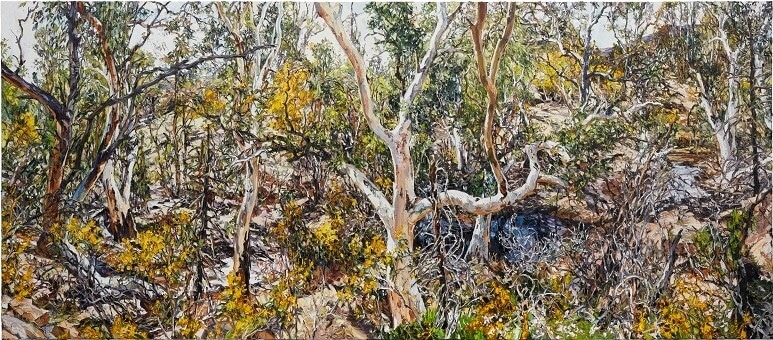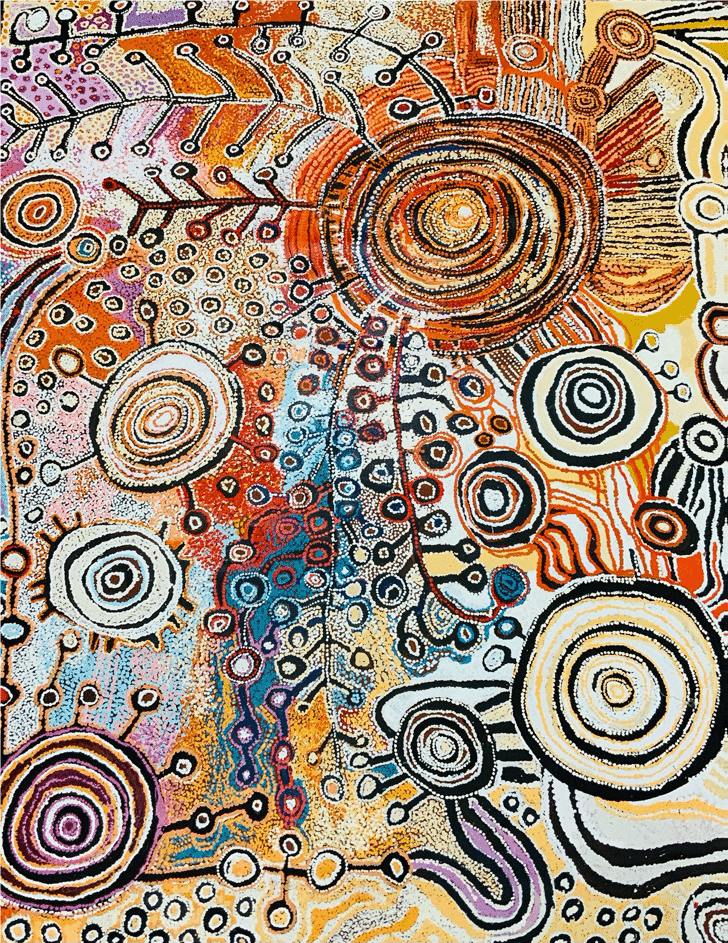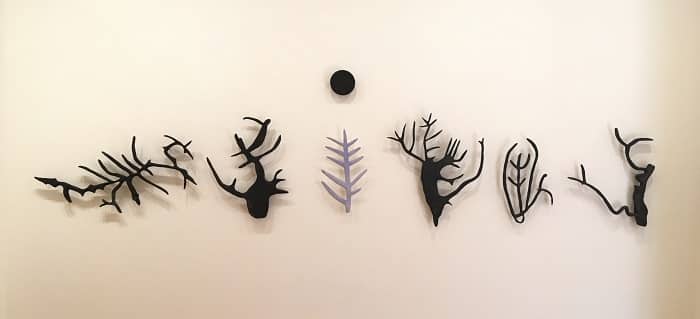“There are more life forms in a handful of trees than there are people on the planet” – Peter Wohlleben, The Hidden Life of Trees
Trees have been on the earth for somewhere between 360 and 470 million of years and there are over 60,000 unique species in existence across the globe. These phenomenal statistics highlight the lasting endurance and powerful life force of trees and the natural world through calamitous spells of drought, fire and flood, and the effects of climate change on far-reaching landscapes, inland and coastal waterways, nature’s precious micro worlds and wildlife habitats.
Independent curator, Gavin Wilson, delivers a potent environmental message with this beautiful exhibition of old and new works by Indigenous and non-Indigenous artists sharing their encounters with and deep concern for the environment. ‘TREE of LIFE: a testament to endurance’ is on display at S. H. Ervin Gallery in Sydney, until 30 May.

‘TREE of LIFE’ articulates the magnificent splendour of trees; from the beauty of their textured barks and whispering leaves in browns, greens, reds and golds, to their role in our existence and the spiritual and physical connections they have with all creatures great and small. The natural world springs to life throughout the gallery in paintings, video, ceramics, works on paper, digital prints, and a multi-media installation.
Exhibiting artists include, from the APY Lands, Adelaide Studio Women’s Collective Josephine Mick, Rhoda Tjitayi, Katie Curley, Barbara Baker, Margot Brown, Inawintji Williamson and Margaret Richards – together with Allana Beltran, Rob Blakers, GW Bot, Nicholas Blowers, Nici Cumpston, Tamara Dean, Rachel Ellis, Louise Fowler-Smith, Richard Goodwin, Nicholas Harding, Janet Laurence, Idris Murphy, Andrew Merry, Euan Macleod, Mathew Newton, Peggy Patrick. William Robinson, Shane Smithers, Mary Tonkin, Emma Walker, John R. Walker and Joshua Yeldham.
The seven women artists from the APY Lands tell us that ‘water is life’ in a collaborative painting entitled Tjukula Tjuta (2020). Circular patterns swirling on the surface of the enormous canvas are vibrant representations of rock holes found in desert regions that after the rains, become vital reservoirs of water. “These rock holes were an important source of water during the dry season when most of the water holes and creeks dried up. Water is an essential element in the desert. Knowledge of rock hole sites is passed on from generation to generation and revered by all Anangu (people) Pitjantjatjara,” the artists explain.

Nicholas Harding’s large painting Wilepena Pound and eucalyptus (sliding rock) (2019-20) is an illuminating portrait of the light-filled landscape in a phase of regrowth after fire at Wilpena Pound in the Ikara-Flinders Ranges National Park in South Australia. It is a place that Harding holds close to his heart, for it was there only a few years ago, while observing the burnt and charcoaled trees that he first became aware of changes in his body that led to a cancer diagnosis. With a focus on the central tree figure in his painting, Harding says, “This particular tree has significance for me, a sentinel figure, a marker of nature’s replenishment, an analogy for my recovery. It has become my tree of life.”
Nicholas Blowers’ oils on canvas and paper, heavily rendered in sooty shades of charcoal and grey, pose a stark contrast to the arc of colour that surrounds. Dramatic scenes of a mine tailing pond at Savage River in Tasmania presents evidence of the effects of mining activity in the region responsible for the heavy metal pollution in Tasmania’s Western river systems.
Allana Beltran’s totemic The Weld Angel (2007) has become a figurative icon for the plight of the natural world. In 2007 Beltran played the role of angelic protagonist watching over Tasmania’s Weld Valley, a stand-in protest against clear-fell logging of the Island state’s ancient forests. The performance-based protest ended in Beltran’s arrest followed by a six-month court battle, which in the end favoured Beltran’s cause. Beltran exhibits film footage of the extraordinary event alongside photo documentation by Mathew Newton.

A shift in medium brings GW Bot’s bronze, glass and ceramic relief sculpture entitled Tree of Life (2019) into the mix showcasing a seven-piece arrangement of materials sourced from the ground. These, the artist posits are a “symbol of hope, of the future – the start of a story, a shoot, a sign of refusing to despair in these desperate times.”
In the aftermath of the 2019/20 bushfires in Australia, which is estimated to have wiped out millions and millions of hectares of land and a staggering billion animals, the evidence of environmental crisis is alarming and undeniable. We must consider and protect not just that which we see on the surface, but all life that co-exists around, within, under and above natural environments; from the ravaged, to the regenerating and the untouched.
‘TREE of LIFE: a testament to endurance’ is a must see exhibition. On until 30 May!
S.H. Ervin Gallery is open Tuesday to Sunday, 11am to 5pm. 2 Watson Rd, Millers Point NSW 2000